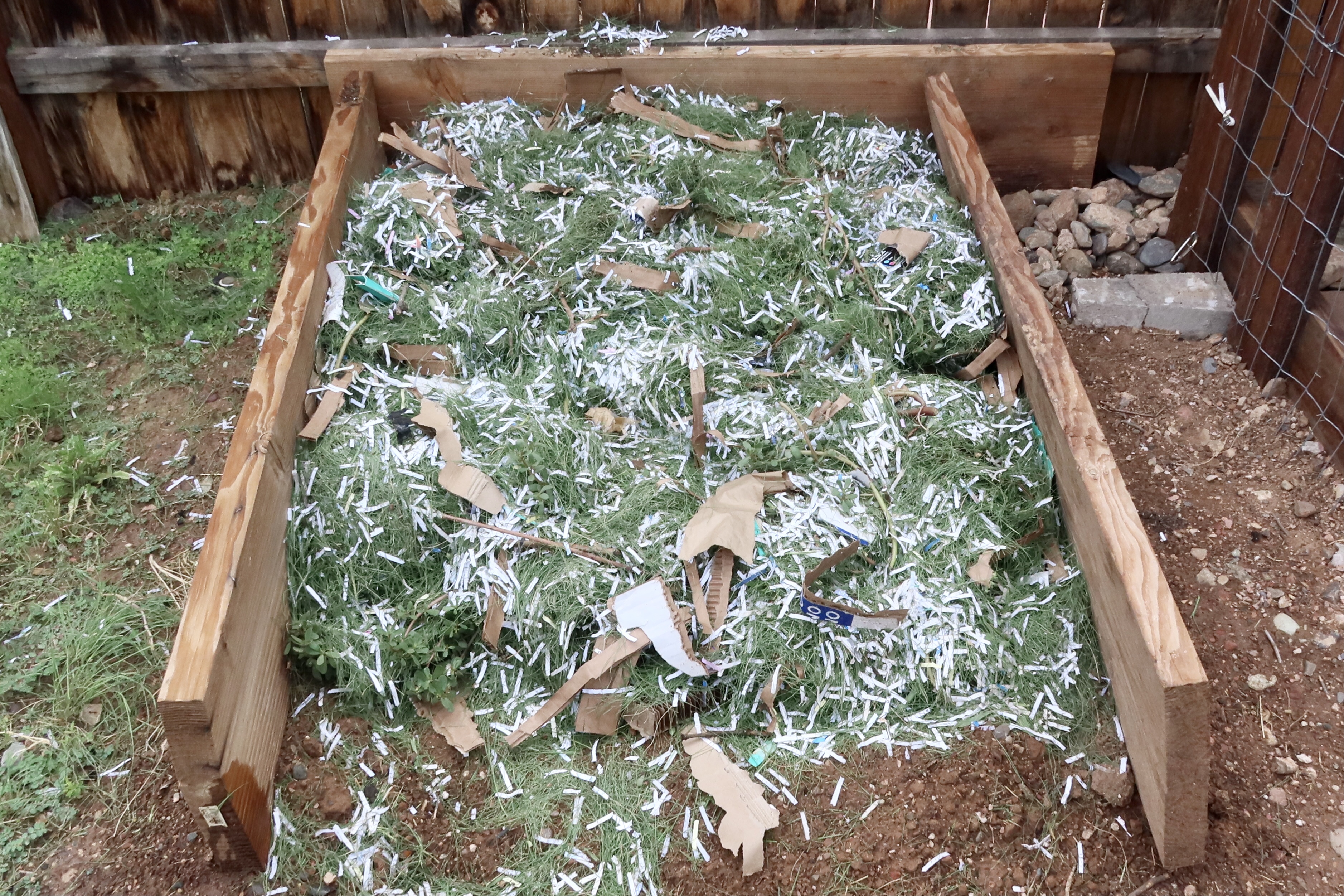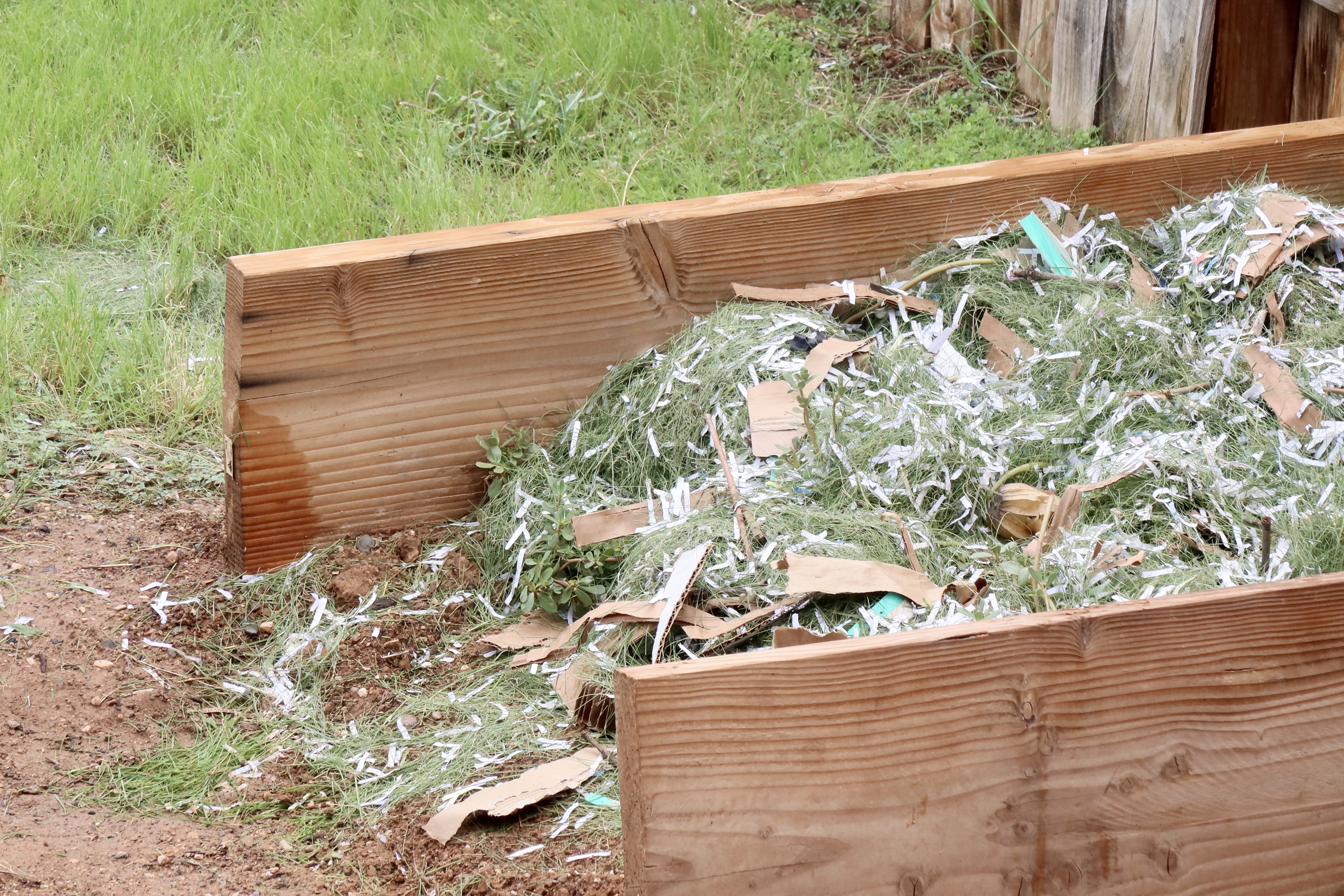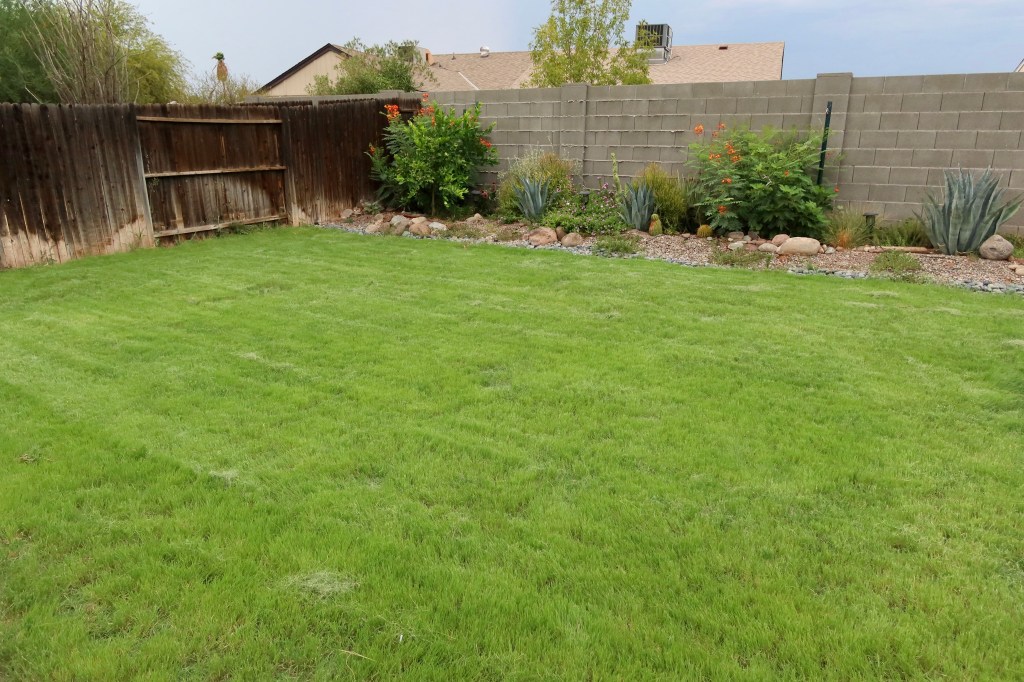I am debating what kind of compost pile I want to build. Cold compost is chill (and can be wormy.) But I think hot compost offers more of a thrill. Let me break it down for you. Add browns (paper stuff) and greens (plant stuff) like any pile. If the ratio is just right and holds moisture, the compost will cook itself! How delectable. So I plant and water a fresh pile of browns and greens. I tuck it in under a couple pieces of cardboard. When I have scraps, I dig a hole and bury them. And my fingers are crossed..
Who knew it was such a science to brew fresh dirt! Maybe I’ll take it’s temperature later… For now I’m letting it break itself down for me!
Death and decay fuel new life, whether it’s from your fresh compost, a mushroom or what’s for dinner. Life and death compete and cooperate. Life and death breed both chaos and order across the food web. Life and death build upon each other. Life and death create growth that spurs us onward, naturally.
Years ago our cat preyed upon a bunny that I tried unsuccessfully to save. It’s one of those uncomfortable things that happen. I buried it in a tin with a big golden beet. My fascination with death has led to creating images. I captured this moment of the end. It’s confronting yet peaceful. We can no longer avoid the conversation. Death needs to be embraced so that it can be understood with reverence. Look at it. Be curious about it. Toss the taboo. Get familiar with this natural process. I call it Bunnykins.
My grandmother always recited the poem, The Spider and the Fly. The opening lines are, “come into my parler, said the spider to the fly.” In a flower garden there are many spiders and many more flies.
My preying mantis friend got eaten. I wonder how many flies the little guy caught while it stood still on it’s leaf all week. I visited every day, tried to be quiet and made an image of it. I know it’s natural, but I was still sad when it got consumed. The preying mantis got preyed upon itself. On and on up the web it goes.
The predator kills it’s prey. We eat; we process the meat. I take a photo. I honor the animal. I appreciate the beauty of it’s sacrifice as it is transmuted into new life. This is the first animal I helped butcher. The photo shows reverence as we kneel to skin the deer.
Finding strength and inspiration in the natural cycles of death and decay is the reason regenerative agriculture appeals to me. It can save our planet, which is dying from the way we abuse our natural resources and wild lands. Our plants and animals and soil suffers from the way we practice industrial agriculture. Regenerative farming can literally bring back life and carbon and water to the soil and in turn the animals, plants and us who all depend upon it. It can resuscitate our ailing earth!
And so we make compost.
We also grew a cover crop (aka lawn) this year here in Phoenix, Arizona. Yes, we do irrigate, but as the root system grows deeper and deeper with the help of beneficial bacteria and mycorrhizal fungi and microorganisms, it also holds more water and let me tell you, we need to sequester as much water as possible! We can also sequester carbon. This can positively affect climate change and our regional water cycle. We over-seed with clover and let the dandelions and purslane live to encourage biodiversity. Pollinators appreciate the variety. So does my cat.
















